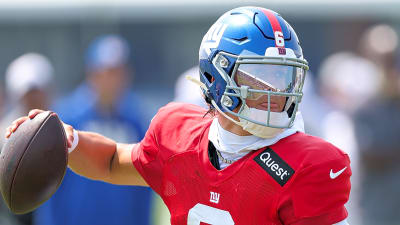
As the Miami Dolphins head into the 2025 NFL season, one of the most pressing questions surrounding the team is whether their pass rush can compensate for the glaring holes in the secondary. On paper, Miami has invested significant resources into its defensive front, but will that be enough to hold up against the league’s elite quarterbacks? Especially when they have to play Josh Allen and the Buffalo Bills twice a year.
Much of Miami’s hopes for defensive success rest on Jalen Phillips and Bradley Chubb, two edge rushers returning from major injuries. While both have displayed elite pass-rushing ability when healthy, there’s no guarantee either will return to pre-injury form. Lower-body injuries often take a toll not only physically but also mentally. Any dip in explosiveness or confidence could significantly weaken their impact off the edge.
Fortunately, the Dolphins anticipated this uncertainty and added fresh legs through the 2024 NFL Draft. They selected Chop Robinson and Mo Kamara, two young edge rushers with upside. Robinson, the more highly touted of the two, saw the bulk of snaps last season and flashed the elite speed and bend that made him a first-round pick. Kamara, on the other hand, remains more of an unknown, having played just 26 snaps in the 2024 regular season. However, with another year of experience and continuity in defensive coordinator Anthony Weaver’s system, both players are expected to continue developing.
Miami didn’t stop at edge rusher. In the 2025 NFL Draft, the team used the 13th overall pick on defensive tackle Kenneth Grant—a massive interior presence with surprising agility. Grant could provide Zach Sieler with the interior support he’s had in past seasons, being paired with Christian Wilkins and Calais Campbell last year. The Dolphins also added Jordan Phillips in the fifth round, a developmental but promising prospect who could contribute rotational snaps early in his career. And Zeke Biggers, who is the biggest question mark of them all, was drafted in the seventh round, but he does add depth to the defensive line.
On paper, this defensive front looks menacing. Theoretically, they should be able to collapse pockets and apply consistent pressure. But pressure only matters if quarterbacks don’t have easy, quick outlets. The Dolphins’ secondary remains thin, lacking proven playmakers capable of disrupting timing or locking down elite receivers. Without dependable corners or dynamic safeties, opposing offenses could neutralize Miami’s pass rush with quick reads and short throws.
Ultimately, the Dolphins’ defensive success may hinge on how quickly the front can get home and whether Phillips and Chubb can return to form. If not, the burden may fall on an unproven secondary, which this coaching staff can’t afford—and neither can an increasingly anxious Dolphins fan base.
More must-reads:
- Shedeur Sanders makes strong first impression in Browns' QB competition
- Texans S Jimmie Ward arrested for allegedly violating bail
- The '2024-25 NFL passing-yard leaders' quiz
Breaking News
Trending News
Customize Your Newsletter
 +
+
Get the latest news and rumors, customized to your favorite sports and teams. Emailed daily. Always free!








